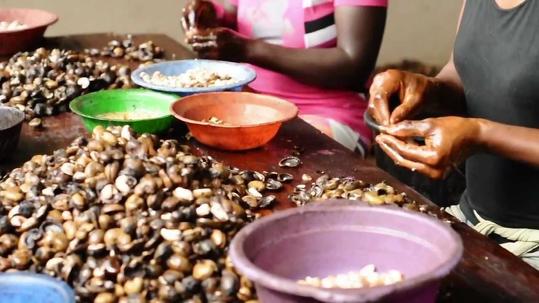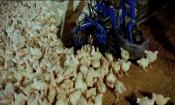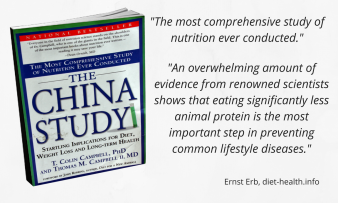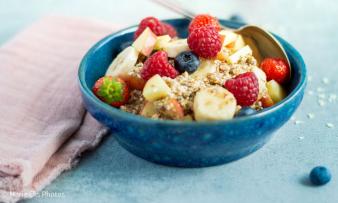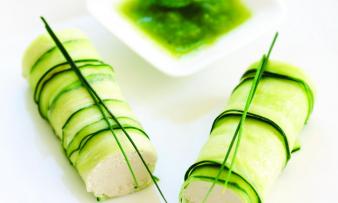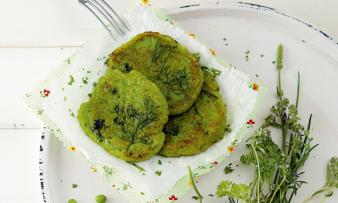Cashew Nut Processing
This video shows a reality mostly unknown to many cashew distributors and consumers, as well as an interesting perspective on African communities.
Cashew nuts are not edible in their raw form because of the toxic compounds found in their two layers of shells. In order to be made edible, they undergo elaborate processing phases which are done mostly manual and usually pose a health risk for the workers.
- To get to the cashew kernel, the outer shell of the raw cashew has to be removed. Since this is very hard, the cashew nuts are first steamed, roasted or boiled in oils. During this procedure, the toxic compounds are burned and the shell becomes brittle. However, the resulting smoke is harmful to health. Because they have been exposed to high temperatures, the cashew nuts can no longer be considered raw.
- After steaming, roasting or cooking, the cashews must dry in the shade for 24 hours. This work is performed in the video by Mr. Matthew Sah Kwadwo.
- The outer shell can be now removed by using a special manually operated device to split the shell. Cashew nuts need to be placed individually between the machine blades, the shell cracked open and the cashew kernel removed.
- The cashew kernels are dried on heated racks, to facilitate the peeling process.
- At this stage, the cashew kernel it is still covered with a soft shell, which contains a substance similar to the chemical in Poison Ivy (Urushiol). That makes it extremely dangerous when ingested and a strong skin irritant. Contact with skin and mucous membranes can even cause severe chemical burns. For this operation, workers often rub their hands with oil or clay or use gloves. When manually cleaning the nuts with a knife, it is also important not to contaminate the core with the poisonous peel oil.
- The last step consists of sorting the cashews by size. Only white, large and whole nuts reach the highest quality level and achieve the highest distribution prices. The safest way to do this is by packing them by hand, as mechanical manipulation can damage them.
The whole process is very time consuming and involves many manual steps. This requires a lot of manpower and also intuitive flair. On the other hand, the cashew nuts distribution enables African residents to build small regional companies, acquire some technical instruments and by that, to support their existence.
Whether African workers receive a fair compensation for their work – remains a critical question. It is our responsibility as consumers to support this by buying fairtrade certified products.
The issues requiring critical consideration are not related only to the production process, but to the consumption choices as well. Cashew nuts have a fatty acid ratio LA: ALA of 103:1, which makes them particularly unhealthy.
Due to their sweet taste and high protein and fat content, they are a staple in the vegan diet. However, regular consumption promotes inflammation in the body and might facilitate the development of various health issues. Find out more about why a vegan diet can be unhealthy and which are the common nutrition mistakes.
The video is produced by PCV Media, a Peace Corps Volunteer led production team and features Matthew Sah Kwadwo, the Director of Kabile Cashew Plant and Terrie Schweitzer, a Peace Corps volunteer.
Some interesting facts, according to Wikipedia:
- Africa accounted for 51.6 % of total world production of raw cashew nuts in 2016, but the largest part is processed in Vietnam due to lower costs. On the other hand, this means a higher burden for the environment because the whole fruits need to be transported over long distances.
- The global production of cashew nuts in 2016 was of 4.9 million tons.
More videos
To understand health and ecology, extensive basic knowledge is required. Here you will find fact-based texts and book reviews.
Due to a lack of knowledge, vegetarians, vegans, and raw foodists often eat unhealthily – for years or even decades. This basic knowledge can prevent this.
The China Study clearly lays out how the current Western diet can be improved to prevent lifestyle diseases. We say: Most important book on nutrition and health
Erb Muesli with Rolled Oats is a vegan (lactose-free), raw muesli. It serves as an especially healthy breakfast and is a good “bread replacement.”
These Cucumber Rolls with “Goat’s Cheese” and Mint Sauce hold together surprisingly well. They are ideal as an appetizer or finger food.
Sun-dried chili peppers and parsley give the savory pea pancakes a special flair. We recommend trying the pancakes with curry.

